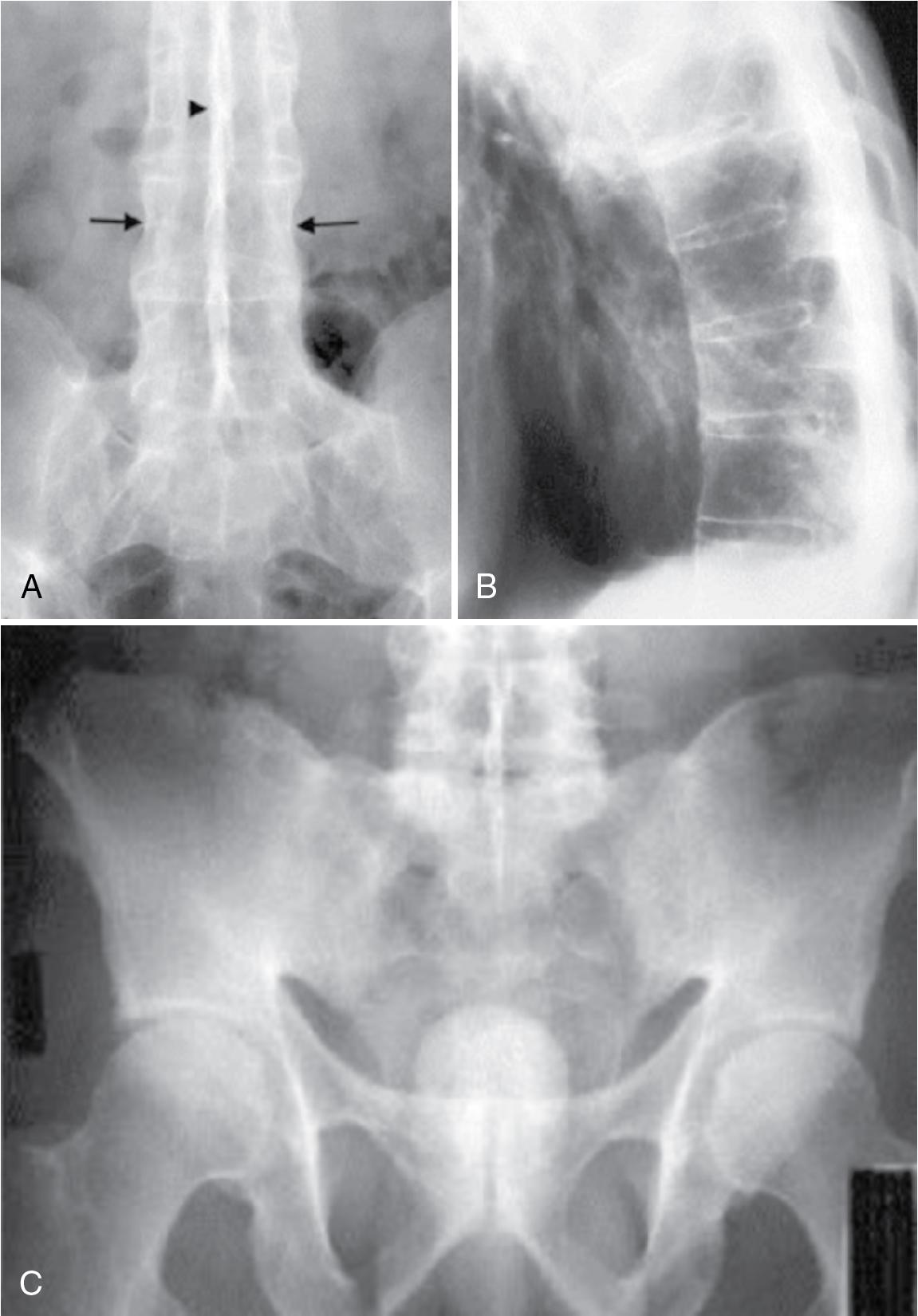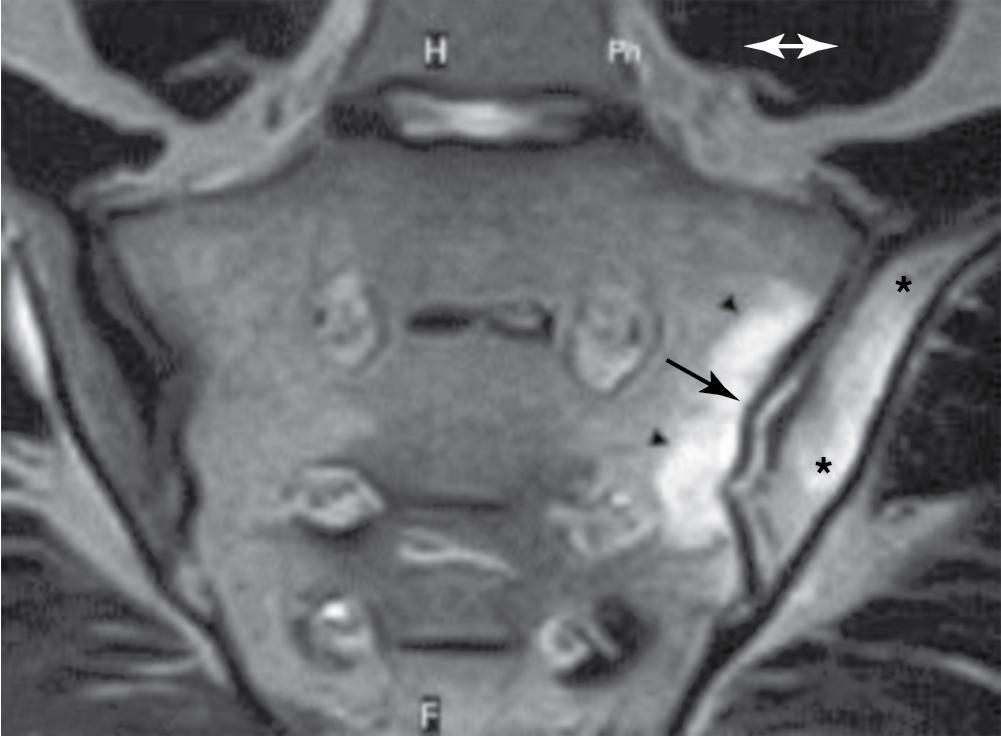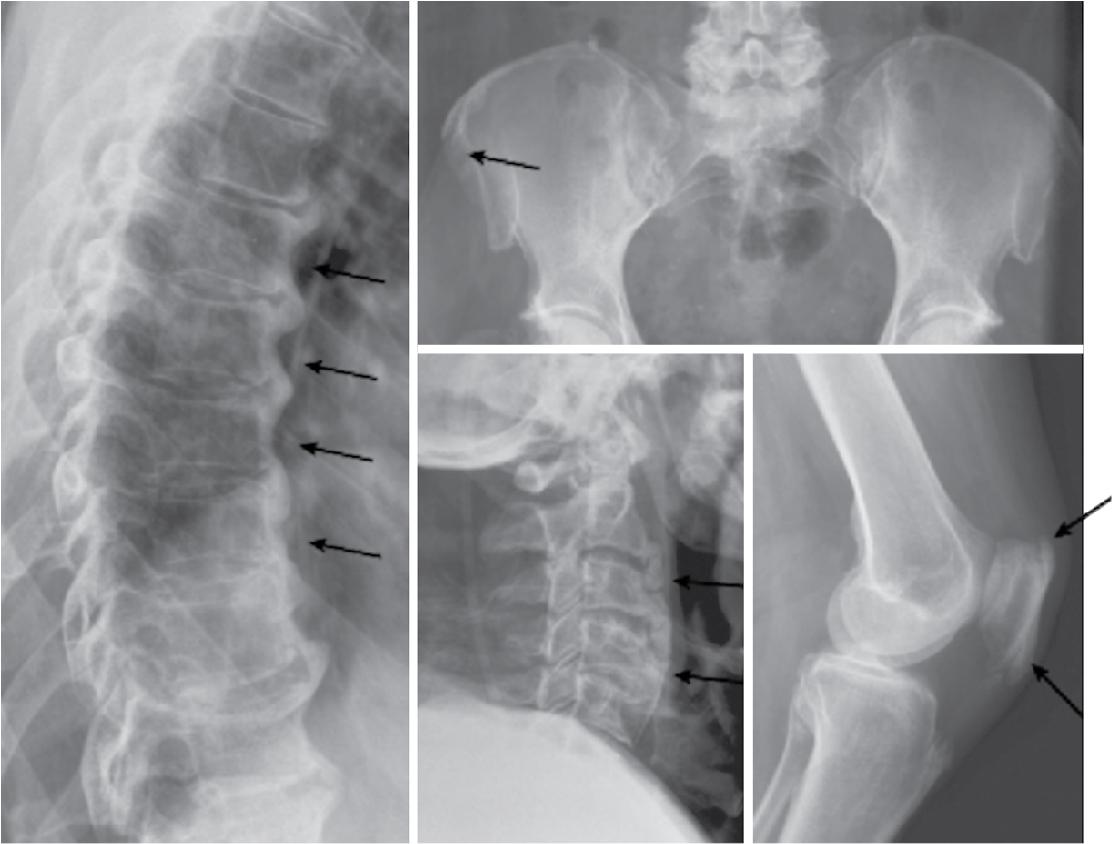Physical Address
304 North Cardinal St.
Dorchester Center, MA 02124
Ankylosing spondylitis (AS) is a seronegative inflammatory rheumatic disease that affects the sacroiliac joints, spine, and peripheral joints. Eponyms for AS include Marie-Strümpell disease and von Bechterew disease. AS is a subtype of a group of interrelated disorders termed seronegative spondyloarthritides , which includes AS, psoriatic arthritis, reactive arthritis, and arthritis in association with ulcerative colitis or Crohn disease. These conditions are grouped under an umbrella term as axial spondyloarthritis (axSpA) due to predominant involvement of the axial skeleton and distinguished from peripheral spondyloarthritis (pSpA). Onset of symptoms due to AS commonly occurs between 15 and 35 years of age (mean age of onset, 28 years) and rarely after age 45. AS is more common in males than in females (3:1). AS presents in its early stages with inflammatory arthritic pain that initially involves the sacroiliac joints and later may involve other spinal regions. The classic feature of AS is enthesopathy (inflammation at the attachments of ligaments, tendons, and joint capsules to bone). Initially, range of motion is normal or mildly limited. Disease progression leads to spinal ossification, osteoporosis, and altered spinal biomechanics. The spine may eventually fuse in a kyphotic posture, leading to severe spinal deformities in some patients. The lack of spinal flexibility causes the spinal column to be vulnerable to fractures following minor trauma. Other skeletal manifestations include dactylitis (sausage-shaped digits), heel pain (enthesopathy involving the Achilles tendon insertion), and hip arthritis. Extraskeletal manifestations occur and commonly involve the eyes (anterior uveitis), as well as cardiac, pulmonary, renal, and neurologic systems ( Fig. 68.1 ).

The incidence of AS in the US is estimated as 7.2 per 100,000 adults. The overall prevalence of AS in the general US population is 0.5%. Heredity plays an important role in AS, as twin studies show that over 90% of the susceptibility to AS is attributed to genetic factors. The prevalence of AS worldwide roughly parallels the prevalence of the Human Leukocyte Antigen (HLA)-B27 gene, which is high in northern latitudes (approaches 15% in Scandinavia) and low near the equator (<1% in Asians and African blacks). However, only 2% of HLA-B27-positive individuals develop AS over their lifetimes. A family history is reported by 7%–36% of AS patients. For individuals who are first degree relatives of patients with AS, the rate of developing AS is approximately 15%–20% if the individual is positive for HLA-B27, and less than 1% if the individual is HLA-B27 negative.
Inflammatory pain and stiffness beginning in the sacroiliac joints, which may subsequently spread to other spinal regions. Inflammatory back pain differs from mechanical back pain and is characterized by insidious onset in patients <45 years of age, alternating buttock pain, awakening in the second half of the night by pain, morning stiffness (>30 minutes), improvement with exercise and nonsteroidal antiinflammatory drugs (NSAIDs), and lack of improvement with rest.
Limitation of spinal motion in the coronal and sagittal planes
Decreased chest expansion relative to normative values for age and sex
Laboratory testing is negative for rheumatoid factor (RF) and antinuclear antibodies (ANA). Nonspecific elevation of erythrocyte sedimentation rate (ESR) and C-reactive protein (CRP) are common.
HLA-B27 antigen test positivity. This finding must be interpreted with caution. Although up to 90% of white patients with AS have HLA-B27, the gene is present in up to 8% of the white population, and <1% of persons in the United States develop AS.
Imaging studies. Arthritic changes in the sacroiliac joints have traditionally been considered the hallmark for diagnosis of AS. Recent studies have shown that evidence of sacroiliitis on plain radiographs is a late finding and occurs 5–10 years following disease onset. Evidence of sacroiliitis on magnetic resonance imaging (MRI) and thoracic MRI evidence of costovertebral joint inflammation are thought to represent the earliest detectable changes of AS on imaging studies. Spinal imaging hallmarks include marginal erosions at the anterior vertebral corners at the attachment sites of the anterior longitudinal ligament (Romanus lesion), marginal syndesmophytes, spondylodiscitis (Andersson lesion), insufficiency fractures, arthritis of the apophyseal and costovertebral joints, enthesopathy involving the interspinal ligaments and kyphotic deformities.”
The Assessment of SpondyloArthritis International Society (ASAS) classification criteria (7) include MRI for identification of active inflammation to aid in earlier diagnosis of axial spondyloarthritides without radiographic sacroiliitis ( Table 68.1 ; Fig. 68.2 ).
| Sacroiliitis on imaging and ≥1 SpA Feature |
OR | HLA-B27 and ≥2 SpA Features |
|
||
|
||
a In patients with back pain >3 months and age at onset <45 years.
b Modified New York Criteria (unilateral grade 3 or 4 or bilateral grade 2–4 sacroiliitis where 0= normal, 1= suspicious, 2= minimal, 3= moderate, 4= ankyloses for radiographic grade).

Treatment of AS is based on current disease manifestations and level of symptoms. Many patients are able to control joint and spine pain/stiffness with NSAIDs, while other patients require stronger agents, such as a tumor necrosis factor α (TNF-α) inhibitor or secukinumab (interleukin [IL]-17A antagonist). Up to 30% of patients develop uveitis, which may be treated with medications such as corticosteroid eye drops, mydriatic agents, topical NSAIDs, systemic steroids, immunosuppressive agents, and TNF-α inhibitors. Regular exercise and group physical therapy have proven helpful. Total hip arthroplasty is considered for severe hip joint involvement. Spinal surgery is of value in select patients. (6)
The disease manifestations of AS may involve multiple organ systems. Consideration must be given to a wide range of issues in patients undergoing surgical treatment including the following:
Cardiac issues: Valve insufficiency, aortitis, conduction abnormalities, ventricular dysfunction, pericarditis. Echocardiogram and cardiology consults are recommended.
Pulmonary issues: Fibrobullous lung disease, decreased chest expansion, diaphragmatic contribution to ventilation. Consider pulmonary function testing and consultation with a pulmonologist. Do not disrupt the diaphragm during an anterior thoracolumbar surgical approach.
Airway issues: Difficult intubation due to temporomandibular and cricoarytenoid arthritis, as well as cervical deformity. Awake intubation under fiber-optic visualization is recommended.
Positioning issues: Kyphotic deformities and atlantoaxial instability require careful consideration to safely position patients for surgical treatment.
Renal issues: Renal dysfunction may be present secondary to chronic use of NSAIDs, amyloidosis or immunoglobulin A (IgA) nephropathy.
Osteoporosis: Pedicle screw anchor points may provide less than optimal fixation due to reduced bone density and quality.
Diffuse idiopathic skeletal hyperostosis (DISH), also known as Forestier disease or senile ankylosing hyperostosis, is a proliferative bone disease that affects ligaments along the anterior spinal column. The etiology and pathogenesis of DISH are unknown. The radiographic hallmark of DISH is the presence of asymmetric nonmarginal syndesmophytes (i.e., the new bone formation is located outside the margin of the intervertebral disc), which appear as flowing anterior ossification originating from the anterior longitudinal ligament, typically involving four or more vertebrae in the thoracic region. These nonmarginal syndesmophytes are more prominent on the right side of the spine and project horizontally from the vertebral column. The intervertebral discs, facet joints, and sacroiliac joints are typically not involved in DISH. In contrast, in AS there are marginal syndesmophytes (i.e., the new bone formation is contained within the margin of the intervertebral disc), which appear thin, vertically oriented, closely apposed to the spinal column and the facet joints, and the disc spaces are typically involved. Peripheral joint involvement by DISH may coexist with osteoarthritis (OA) and cause heterotopic ossification involving joints that are not commonly involved by OA, including the metacarpophalangeal joints, elbows, shoulders, and ankles. Other entheses involved by DISH include the calcaneus, patella, and olecranon.
DISH typically presents after age 50 and has a slight male predominance. DISH is quite common, with reported prevalence rates in males of 10%–25% compared with 5%–15% in females over the age of 50 years. DISH has been linked to metabolic and constitutional factors as it has a higher association with type 2 diabetes, hypertension, heart disease, dyslipidemia, hyperuricemia, and obesity. It is a seronegative disease and has no affiliation with HLA B27 tissue type. Patients may be asymptomatic or may experience symptoms related to spinal involvement, including pain and motion restriction. Additional problems associated with DISH include dysphagia (secondary to cervical osteophytes), spinal stenosis, heterotopic ossification, enthesopathy, and peripheral joint involvement. Loss of spinal mobility leads to altered spinal biomechanics and predisposes patients to spine fractures following minor trauma. The long, rigid lever arms of stiff spine segments above and below the level of injury increase instability and make fracture treatment challenging. In patients undergoing surgery, limitation of neck motion can lead to difficulties with intubation and an increased risk of aspiration pneumonia has been reported postoperatively.
There are no specific treatments for DISH beyond the use of antiinflammatory agents and physical therapy modalities for pain. Patients should be screened for cardiovascular and metabolic risk factors and treated as appropriate ( Fig. 68.3 ).

In patients with AS , spine surgeons may need to intervene for treatment of:
Fractures
Sagittal plane spinal deformities
Atlantoaxial instability
Spondylodiscitis
In patients with DISH , spine surgery is most commonly indicated for treatment of:
Fractures
Dysphagia due to anterior cervical osteophytes
Spinal stenosis ( Table 68.2 )
| AS | DISH | |
| Cause | Autoimmune | Idiopathic |
| Age of symptom onset | 2nd to 3rd decade | >50 years |
| Sex ratio (M/F) | 3:1 | 2:1 |
| Clinical features | Inflammatory back and SI pain, spine fractures, postural abnormalities, involvement of large peripheral joints | Variably painful, spine fractures, dysphagia, spinal stenosis |
| Radiologic features | Marginal syndesmophytes, ossification of disc spaces and facet joints, “bamboo spine,” bilateral sacroiliitis, ossification progresses from lumbar spine proximally | Nonmarginal syndesmophytes, preserved disc spaces and facet joints, large flowing osteophytes connect atleast four thoracic vertebrae |
| Laboratory tests | Increased ESR, CRP; negative for RF and ANA; association with HLA-B27 | Nonspecific, association with HLA-B8 |
| Associated conditions | anterior uveitis, osteoporosis; cardiac, pulmonary, renal, and neurologic conditions | Type 2 diabetes, hypertension, heart disease, dyslipidemia, hyperuricemia, obesity |
| Medical treatment | NSAIDs, TNF-α inhibitors, IL-17A antagonist | NSAIDs, treat cardiac and metabolic risk factors |
| Surgical treatment | Fractures, spondylodiscitis, spinal osteotomies, C1–C2 instability, hip arthroplasty | Fractures, dysphagia secondary to cervical osteophytes, spinal stenosis |
Direct mechanical compression of the larynx, pharynx, and esophagus. Patients with large anterior osteophytes at C2–C3 may develop respiratory difficulties, since these osteophytes can compress the posterior pharyngeal wall and larynx and obstruct breathing. Osteophytes from C4 to C7 can press on the posterior esophagus and cause compression and dysphagia (see Fig. 68.3 ).
Combination of extrinsic compression from large anterior cervical osteophytes and internal obstruction from a reactive inflammatory mass.
Cricopharyngeal spasm
Disturbances of the normal epiglottis tilt over the laryngeal inlet by the osteophytes at the C3-C4 level
Become a Clinical Tree membership for Full access and enjoy Unlimited articles
If you are a member. Log in here